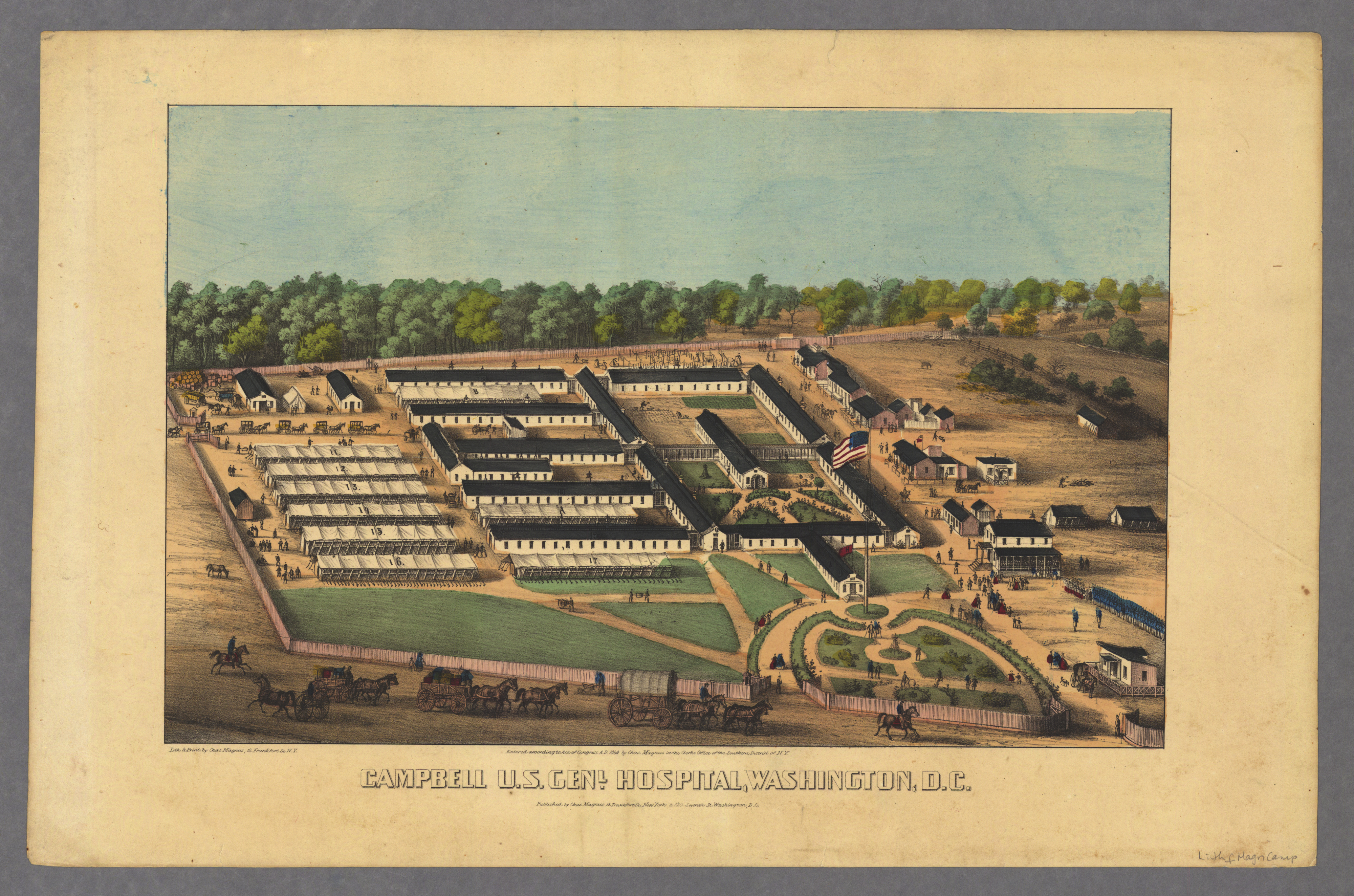4. “Campbell U.S. Genl. Hospital, Washington, D.C.,” Charles Magnus, hand-colored lithograph, image and text 30 x 43 cm., on sheet 36 x 55 cm. (Washington, D.C., c. 1864). Courtesy of the American Antiquarian Society, Worcester, Massachusetts.Of the Washington hospitals Whitman visited and documented during the Civil War, Armory Hospital received the greatest attention. The hospital was proximate to the Seventh Street steamboat landing, as well as the Washington and Alexandria Railroad station, and, as Martin B. Murray notes, “took the most severely injured—and suffered the highest death rate of any area facility.” A letter Whitman wrote to his mother, Louisa Van Velsor Whitman, on June 30, 1863, reads: “I devote myself much to Armory Square Hospital because it contains by far the worst cases, most repulsive wounds, has the most suffering & most need of consolation—I go every day without fail, & often at night—sometimes stay very late—no one interferes with me, guards, doctors, nurses, nor any one—I am let to take my own course.” In contrast to Armory, a “model” hospital built for the purpose it served, Campbell U.S. General (another hospital Whitman visited) had originally served as cavalry barracks. Situated at Florida Avenue and Sixth Street, the barracks were later adapted to serve as a makeshift hospital. Following the war, as Murray notes, the barracks “housed Freedmen’s Hospital, forerunner to the Howard University Hospital.”


